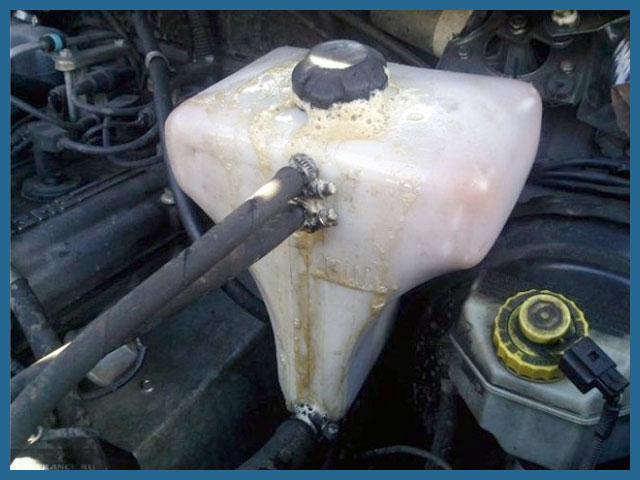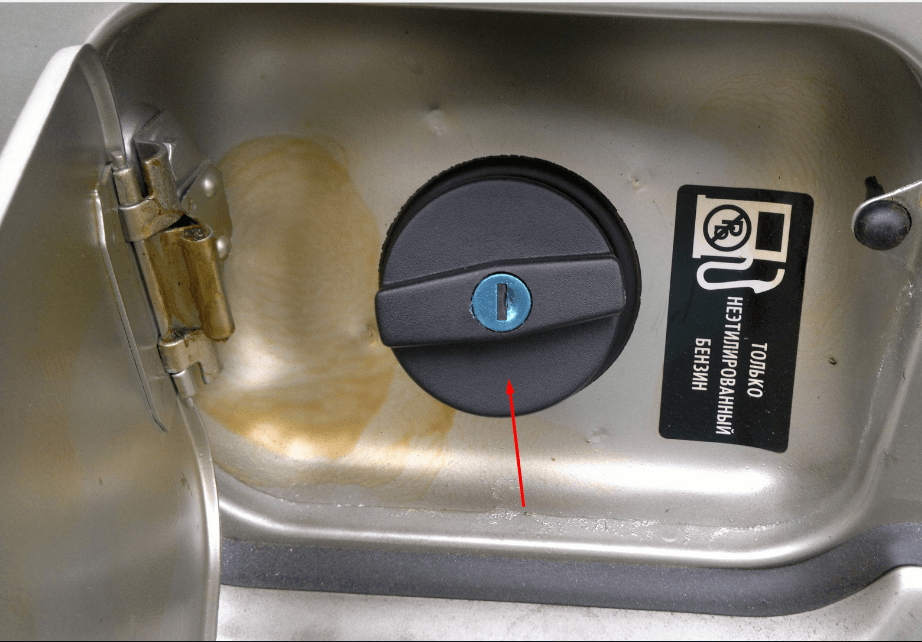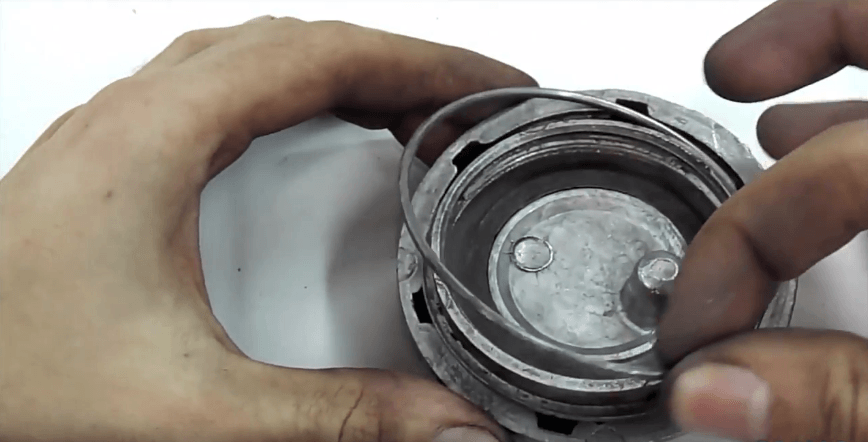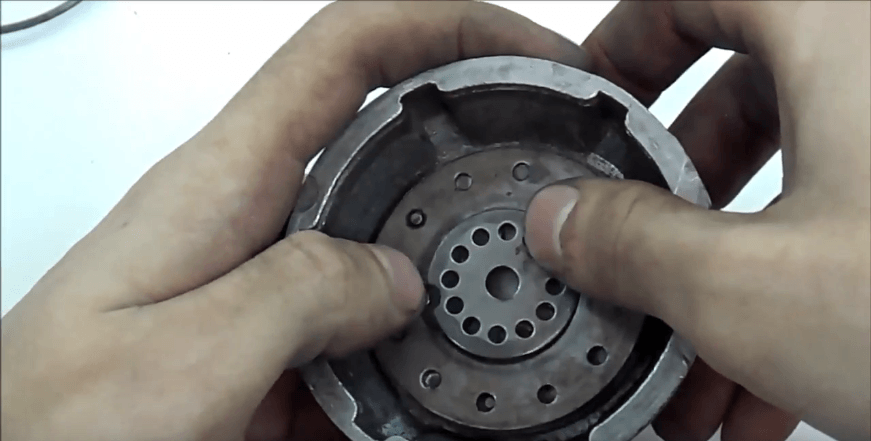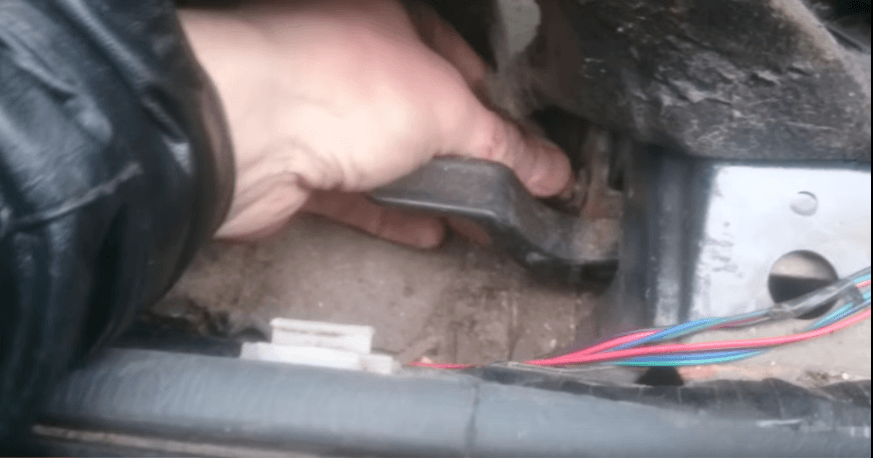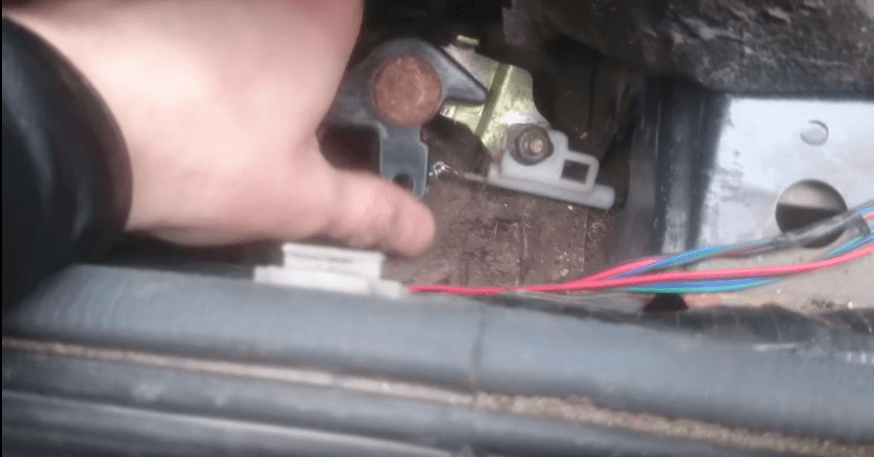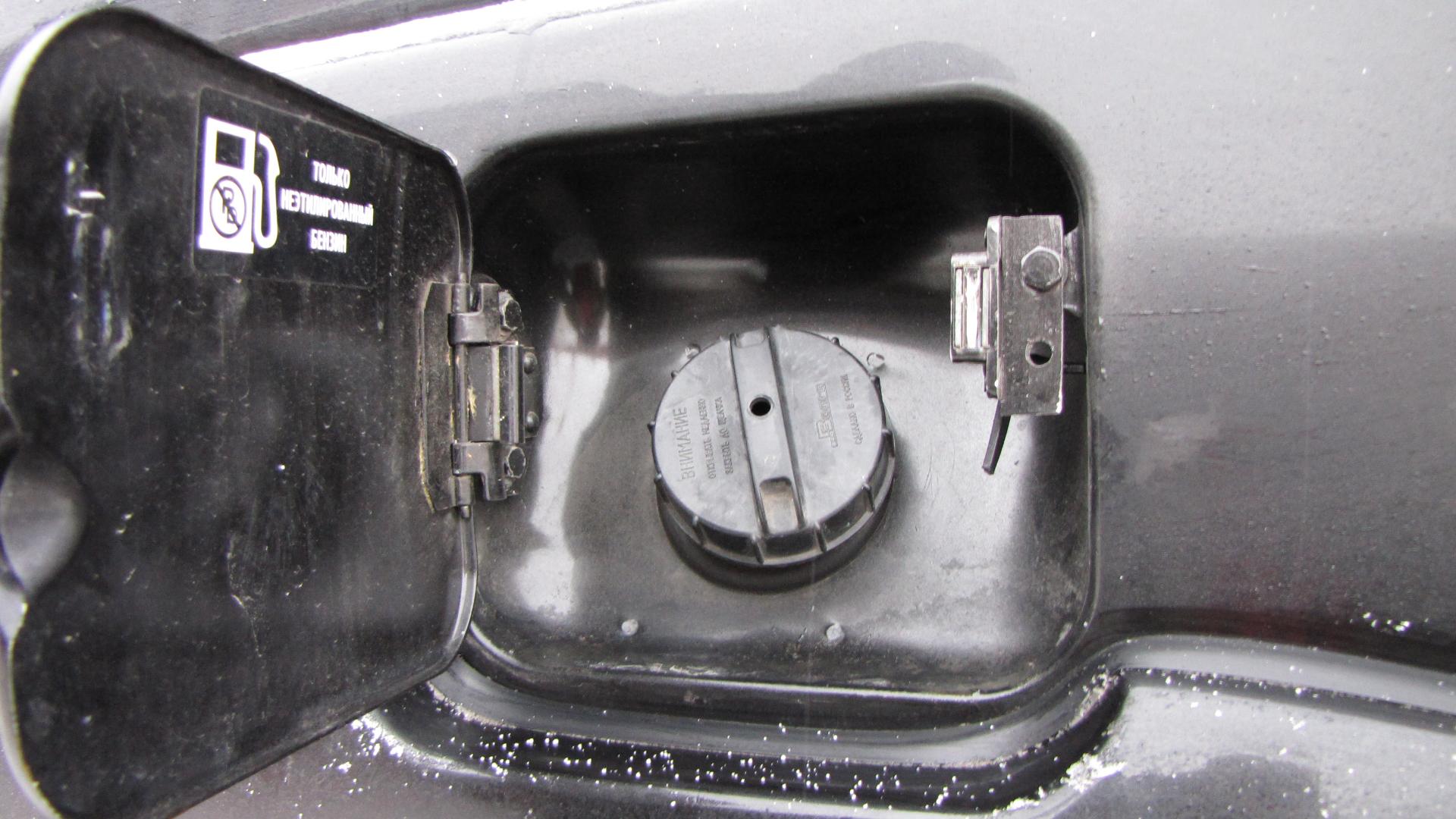
Fuel tank cap: classification, malfunctions, how to open without a key and code
Content
The hatch or cap of the gas tank, despite its stealth, plays an important role in the overall performance of the engine. The cover is a mandatory attribute of the vehicle. On used cars, it can deteriorate, and then you have to use various repair methods, including a full replacement.
Content
- 1 Detailed classification of gas tank caps
- 1.1 How the different lid models open
- 2 Common malfunctions
- 2.1 Lid freezing
- 2.2 Pin jam
- 2.3 Thread breakage
- 3 Secrets of opening the lid without a key and code
- 3.1 Required Tools
- 3.2 Repairman's actions
- 3.3 Opening the code cover
- 4 How to remove the gas cap
- 5 Cover repair
- 5.1 hatch replacement
- 5.2 Replacing the cable
- 5.2.1 Video: do-it-yourself cable replacement
Detailed classification of gas tank caps
The motorist must understand that the cover is not just an element that closes access to the tank. In a modern car, it still performs a number of other functions: it stabilizes the pressure inside the fuel tank, isolates gasoline or diesel fuel from the negative effects of the external environment, etc.
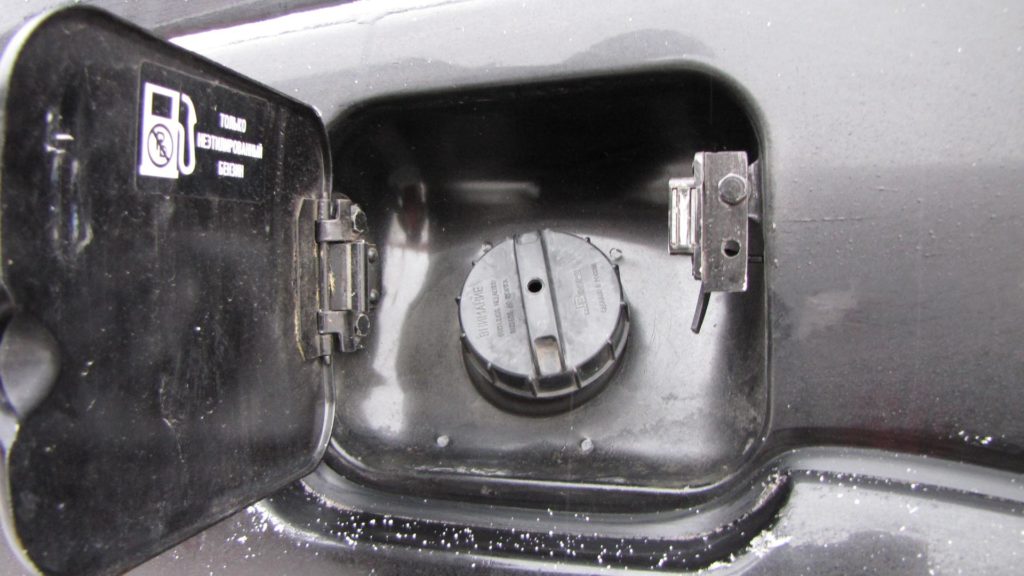
The fuel tank cap is an important functional element of a car.
The design of the element depends directly on the shape of the neck of the fuel tank. To the greatest extent, everything is determined by the thread diameter and type (it can be external and internal). The depth of entry of the lid into the neck, volume, etc. is also important.
The material of the cover is always selected taking into account fire safety. This is especially important for vehicles equipped with gasoline systems. Fuel of this type tends to explode from excessive pressure, it is more sensitive to the effects of vapors.
In terms of design, covers are divided into several types:
- The first option is the easiest. The cover is equipped with the only function - the isolation of the fuel liquid from the effects of the atmosphere.
- The second option is a complex system equipped with valves. The latter ensure the stability of the pressure inside the tank.
- Lockable lids. In addition to their basic functions, they protect the fuel tank from unauthorized entry.
- Models with memory. These covers are specially designed for forgetful motorists, they are connected to the tank neck or hatch with a chain.
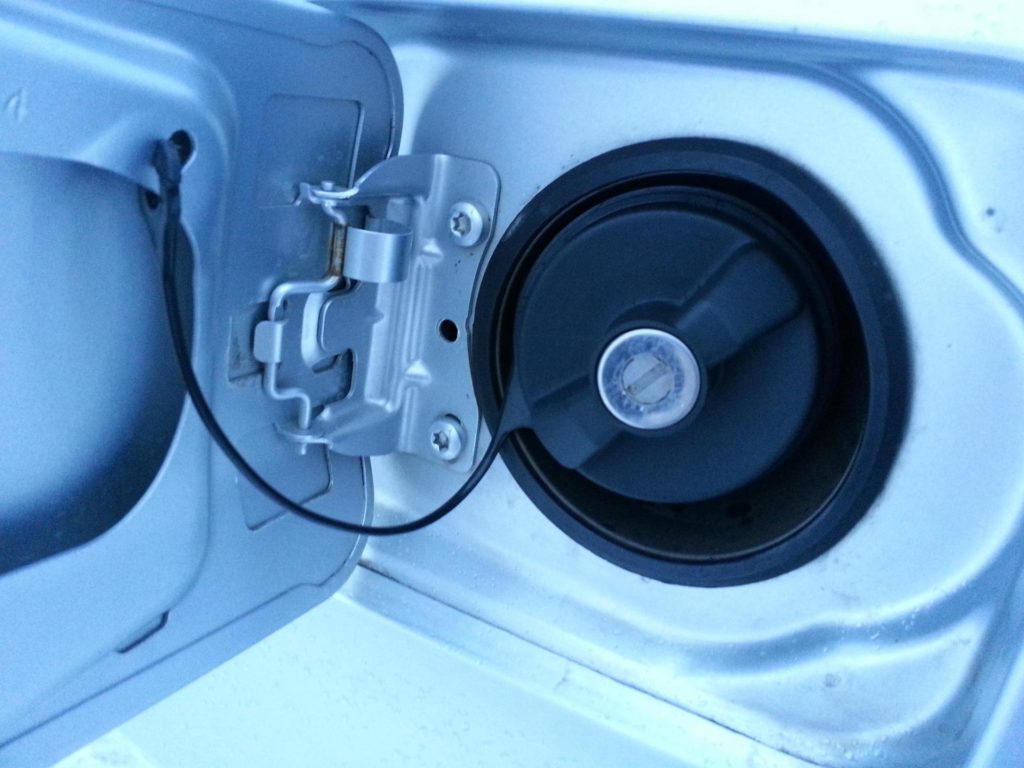
Cover with plastic holder or chain specially designed for forgetful car owners
In addition, covers are classified according to the types of locking mechanism:
- bayonet, which are closed by changing the angle;
- threaded;
- shut-off, as on metal canisters.
Bayonet and screw caps are more commonly used. The first ones are easier to close and open, but they are rarely installed on cars, for the most part, this is the lot of tractors and trucks.
Threaded covers can be with both internal and external threads. The difference is in the location of the main and counter threads on the neck of the tank or the cylindrical surface of the lid.
Covers are also divided according to ventilation indicators:
- Valveless models are installed in fuel tanks, which provide autonomous systems for stabilizing pressure and trapping fuel vapors.
- Single-valve covers are equipped with tanks in which only the fuel vapor recovery system is involved, but there is no separate stabilization system.
- Finally, tanks without self-contained systems are equipped with covers with two valves. Their purpose is to stabilize the pressure when the level of gasoline drops, and dump fuel vapors.
The most common today are single-valve covers. This is due to the design features of modern car models, equipped only with an autonomous fuel vapor recovery system.
Covers are also classified according to the type of protection against theft:
- Standard options that do not have any protection.
- Models with a padlock suspended on special brackets.
- Covers with the usual lock which larva is vertically built in.
- Code caps.
- Models with a lock that opens with the ignition key of a specific car.
Standard covers have become more common, as their installation is simple. However, recently there has been a demand for covers with combination locks. The padlock is practically out of use today. And covers with a lock that opens with an ignition key are found on some top foreign cars.
Fuel tank caps can also be classified according to the presence of additional components:
- with chain or plastic connector;
- with a special corrugated handle for easy opening.
And finally, they are metal or plastic, universal or designed for one car model.
How the different lid models open
Fuel tank caps can open in different ways. As a rule, this is easy to do on domestic cars, on foreign cars it is much more difficult. To open the code hatches, you have to set the desired ratio of numbers. In a word, how many models, so many ways of opening.
- A hatch that opens by pressing the corresponding button in the cabin. It is located either on the door on the driver's side or on the armrest.

The fuel cap control button is located on the driver's door.
- A cover that opens with a standard remote control (remote control) from the central lock. In this case, the wiring of the hatch is paralleled with the door locks.
- A variant of the hatch, opening with a lever with the image of a gas station. The lever is located, like the button, on the threshold of the driver's door.
- Simple lids open by lightly pressing them until they click. Then, holding the notch, you need to pull the hatch towards you.
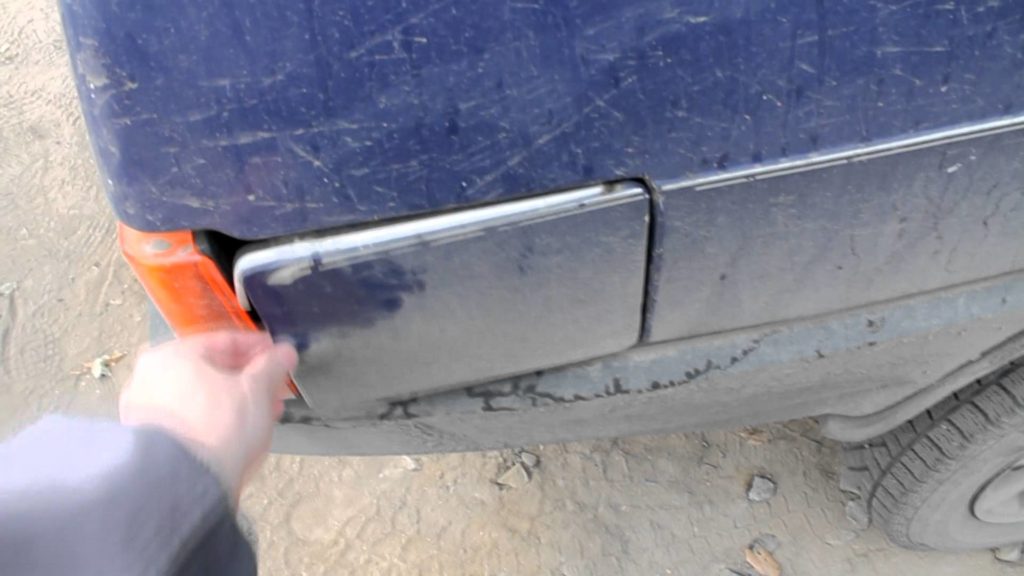
Notched lid opens by pulling on itself
Common malfunctions
With active use of the car, the fuel tank cap deteriorates. In any case, you should not panic, almost all problems are easily fixed, sometimes the cover can be easily replaced with a new one. The list of the most common faults includes:
- freezing mechanism;
- stuck plastic pin;
- damage to the lock cylinder, etc.
Lid freezing
Freezing of the lid often happens in the cold season. The owner stops at a gas station to refuel and cannot open the tank. The hatch mechanism that maintains normal unlocking freezes. At low temperatures, the plastic pin hardens and no longer sinks in.

The freezing of the gas tank cap occurs as a result of the difference in air temperature outside and inside
Of course, this is not the fault of the automaker. Designers initially took care of the cover material at the development stage. In most cases, it is frost-resistant, but while driving, the interior becomes very hot, hot air vapors circulate throughout the interior of the car, including the cover mechanism. The latter on the reverse side at low temperatures “presses” frost.
Thus, condensation forms on the lid. Closest to the cold air is the pin. Moisture turns into ice, the hatch opening mechanism hardens, the lid does not work well.
What to do? It is obvious that the solution suggests itself. It is necessary to warm up the frozen parts, this will lead to thawing of the mechanisms and their performance.
Experienced motorists recommend injecting VD-40 liquid into the mechanism with the onset of cold weather. After processing, you need to open and close the lid 2-3 times. This will prevent freezing.
To open the lid of the hatch in the cold, it is enough to sprinkle hot water from a thermos on it. The ice will melt instantly, and the mechanism will open.
Pin jam
If the lid does not open in the warm season, this is most likely due to the plastic pin being stuck. Many modern sunroofs are controlled from the passenger compartment by an autolever. The latter can “walk” tightly, and when raised, remain motionless. The cover in such a situation will not respond to the driver's manipulations, since it is in the closed position, it holds its pin, which is released during the opening of the central lock.
The problem is solved with the help of an assistant. You can ask the passenger to hold the lever from the passenger compartment, and push the hatch from the outside. As soon as the lid opens slightly, the motorist must react and pick up the hatch. If there is no assistant, the lever can be fixed in one position with a driver's mat or other object. In order not to damage the paint of the machine, it is recommended to wrap the screwdriver with a rag.
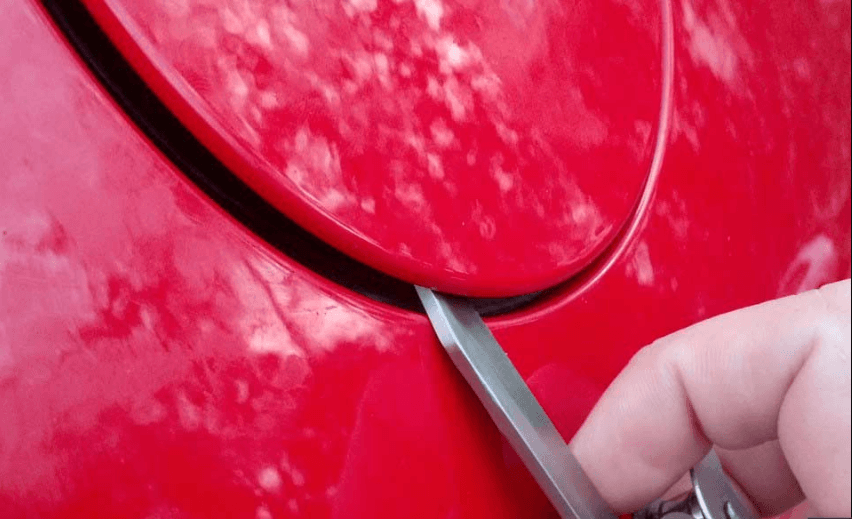
If the gas tank does not open, you can carefully pry it off with a knife or screwdriver
Under the lining in the luggage compartment on some cars there is an electric drive designed for emergency opening of the gas tank in the event of a malfunction. It is usually covered by a lid. To open the hatch, you need to stick your index finger into the rectangular hole, feel for the pin and move it in the opposite direction.
Thread breakage
If the cap is threaded, it is less prone to breakage. However, if this happens, it does not get out, it will be possible to open the tank only by disassembling or breaking it. There is simply no other alternative way to extract it.
Owners of vehicles with such a cover are advised not to completely empty the fuel tank in case they have to drive to the nearest service station.
Secrets of opening the lid without a key and code
Keycap models are quite common lately. They are equipped with most of the modern foreign cars. In addition to the main functions, such a cover does not allow unscrupulous neighbors to steal gasoline from the fuel tank. But if the key is lost or broken, the owner himself will not be able to open the tank.
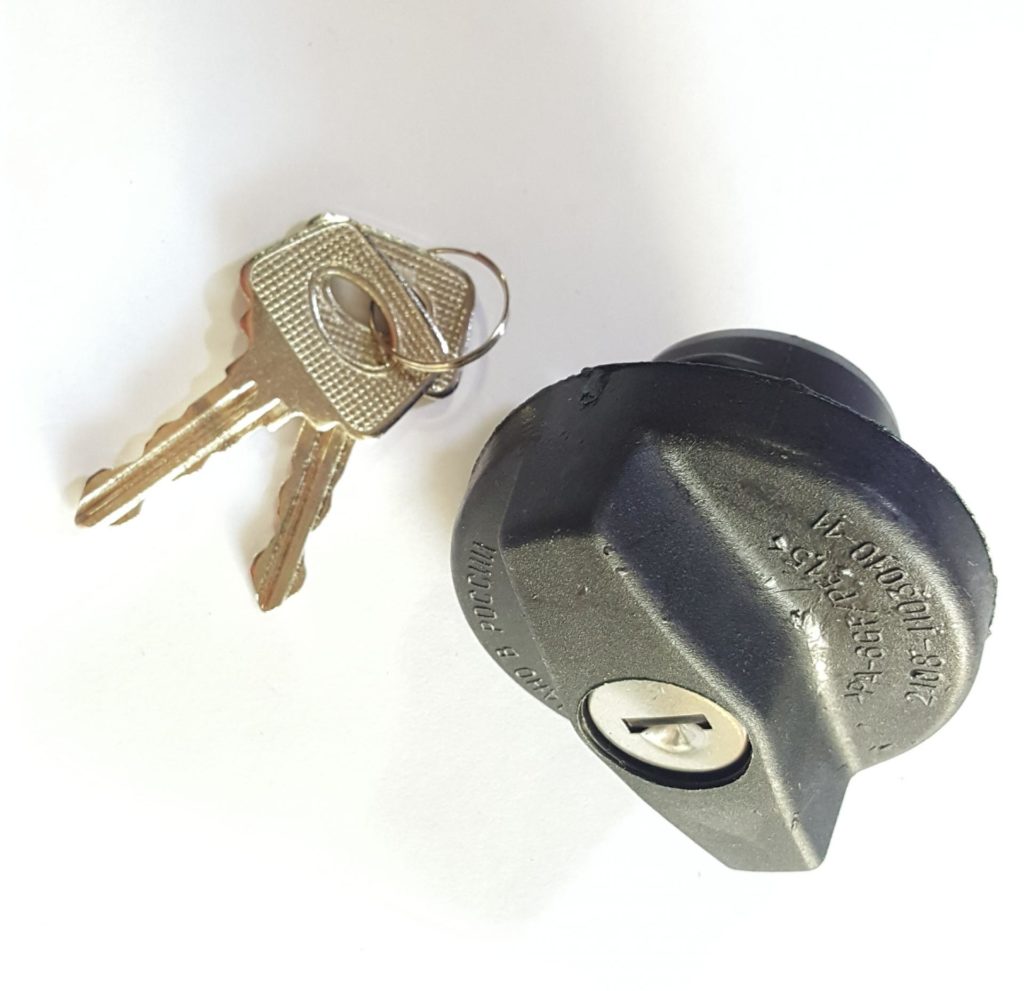
Fuel tank cap with key protects against theft
The design of such covers implies the presence of two parts: external (movable) and internal (fixed). Relative to each other, they rotate, preventing the lid from opening. The key plays the role of a latch of one of the parts, respectively, by inserting it into the larva, you can open the hatch.
Required Tools
Here is what you need to prepare for quick and fruitful work:
- self-tapping screw;
- screwdriver;
- drill.
Repairman's actions
All work is carried out carefully and consistently:
- The cover is drilled in this place, and a self-tapping screw is screwed in. This is necessary in order to connect both parts of the cover.

Drilling the cover in this place
- After screwing in the self-tapping screw to 75-80 percent of the depth, both parts of the cover are connected, and it can be unscrewed with your fingers.

Unscrew the cover after screwing in the screw
Now the cover can be unscrewed and screwed in without using a key. You can leave this matter as it is, wait with the replacement. A cover with a self-tapping screw will perform its functions for a long time, but already without a key.
Opening the code cover
There are also code covers. The principle of operation in them is similar to caps with a key. One part is movable with numbers, the other is fixed. The owner of the car, who knows the code, fixes the movable part of the cover in one position, for example, as in the photo - 5 and 11, and opens it.
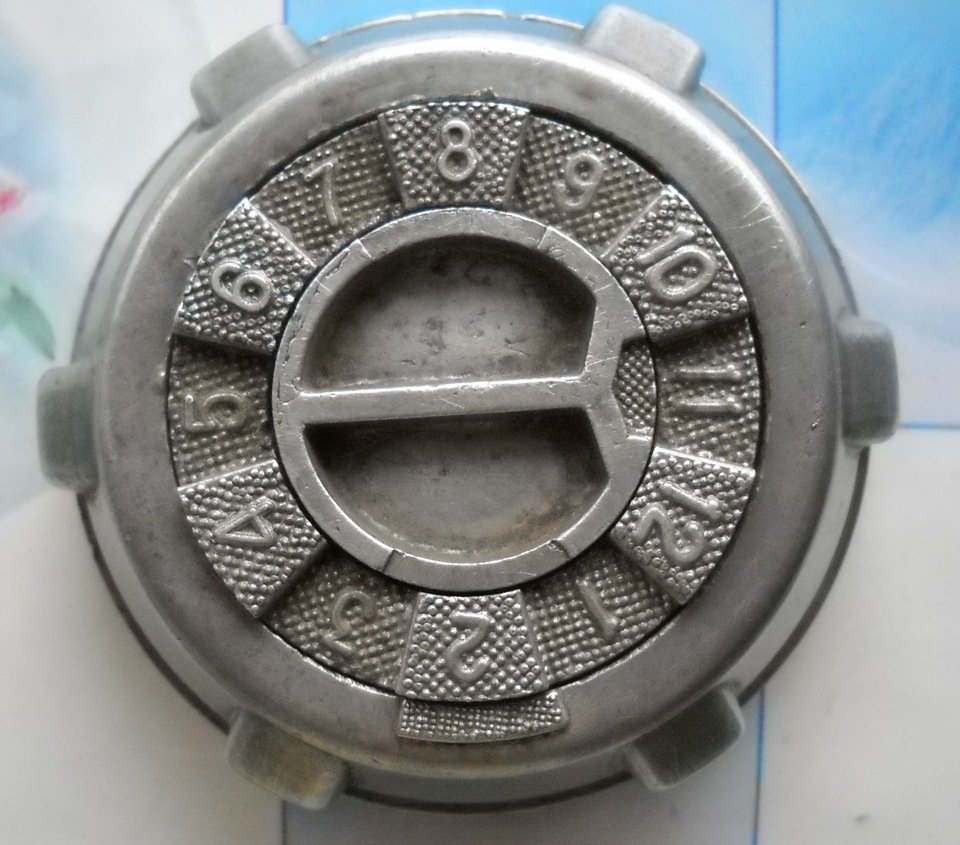
Code cover set to 5 and 11
In terms of reliability, such covers leave much to be desired. Especially those covers that are installed on VAZ cars. Imported models are made a little better. Their disadvantage is that you can open the lid in a few minutes of painstaking selection by typing the code.
The cover code can be changed in any convenient case. To do this, you just need to sequentially perform a series of elementary actions:
- From the back of the cover, remove the retaining ring using a screwdriver or other similar tool with a sharp pin.

Remove the retaining ring from the back of the cover.
- Next, remove the part of the cap that is screwed onto the gas tank neck.

Part of the code cap that is screwed onto the tank neck
- Then you need to remove the springs and the matrix retainer.
- Now we need to extract the matrices.

Code cover matrices are also removable
These same matrices are the details that create the code. In order for the lid to open, these two crescent-shaped recesses must come together.

The recesses of the crescents must match
They must be connected under this matrix, one hole of which is made large.

Code cap hole with large size
To create a new code, you need to remove all matrices. Then you should set any code by turning the movable part of the cover. Reassembly is carried out carefully and carefully, so as not to forget to put in place all the matrices, springs and cotter pin retainer.
How to remove the gas cap
Quite often, the gas cap is removed and shown to the colorist to match the paint color. For example, if the car body has to be repainted or updated. It rests on guides. To remove it, you need to slightly open it, slightly pull it towards you and move gently towards the front of the car. Thus, it is possible to achieve the withdrawal of the tabs of the hatch from engagement with the guides.

Hatch guides hold the gas tank cap
Cover repair
If the cover is subject to adjustment, then it is removed and repaired. Most often, the hatch and the drive cable that controls the lid from the passenger compartment are replaced.
hatch replacement
About the lid hatch was written in detail above. It rests on guides, which, through negligence, can be easily broken. For example, on a Volvo car, the antennae often break at the guides in these places.
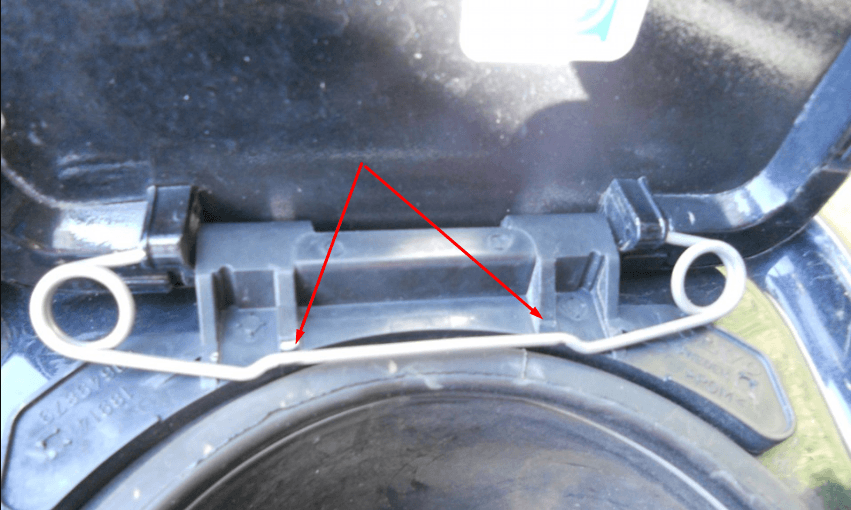
Hatch tendrils break in these places
You can make homemade mounts if you re-drill the holes with a thin rod, as shown in the photo.
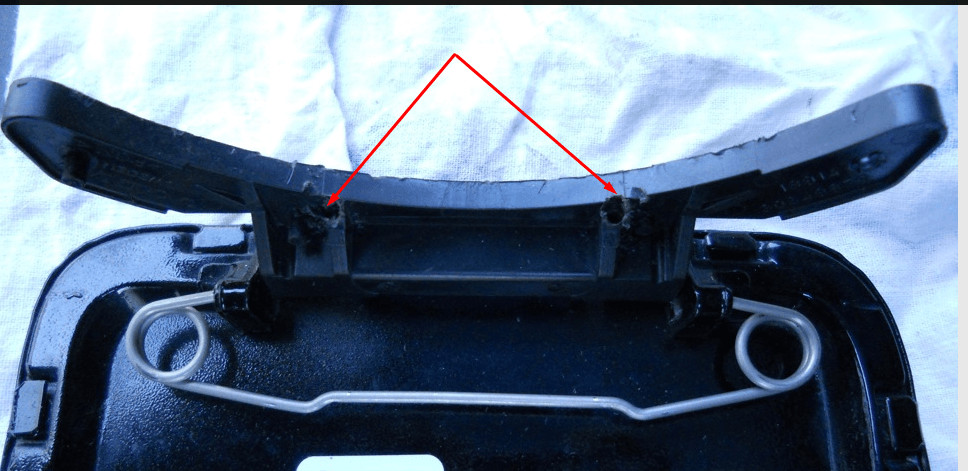
Drilling holes with a thin drill
And then screw in the bolts, cut off their hats, and bend them. Get perfect new fasteners.
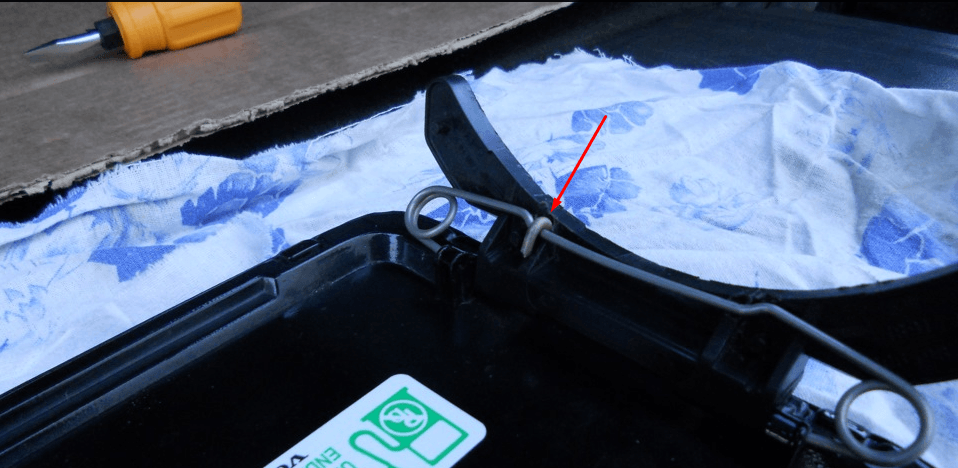
We bend the bolt, and we get the perfect mount
Replacing the cable
To get to the cable, you need to open the trunk of the car, lift the trim from the side of the compartment (from the side of the tank), remove the plastic moldings of the door sills, under which the cable is laid.
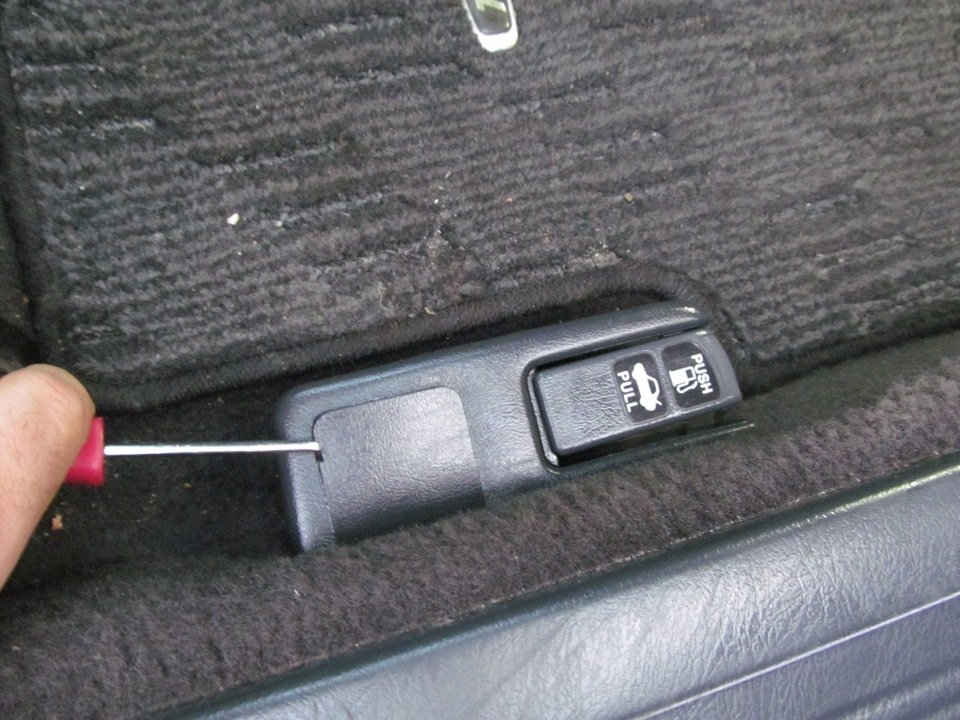
Remove the plastic moldings to get to the cable
Next, you need to act like this:
- Under the rear seat trim is a lever that is responsible for opening the lid. Here you can see the bolt. It should be unscrewed.

The cable mechanism bolt must be unscrewed
- Then pull the mechanism along with the cable towards you.

The mechanism with the cable must be pulled towards you
- Change the cable, removing it from the mechanism, and install a new one.
Video: do-it-yourself cable replacement
Being an important element of the fuel system and the entire car, the gas tank cap deserves periodic inspection. This responsibility falls on the shoulders of the car owner himself, who must be able to notice and fix faults in time.
